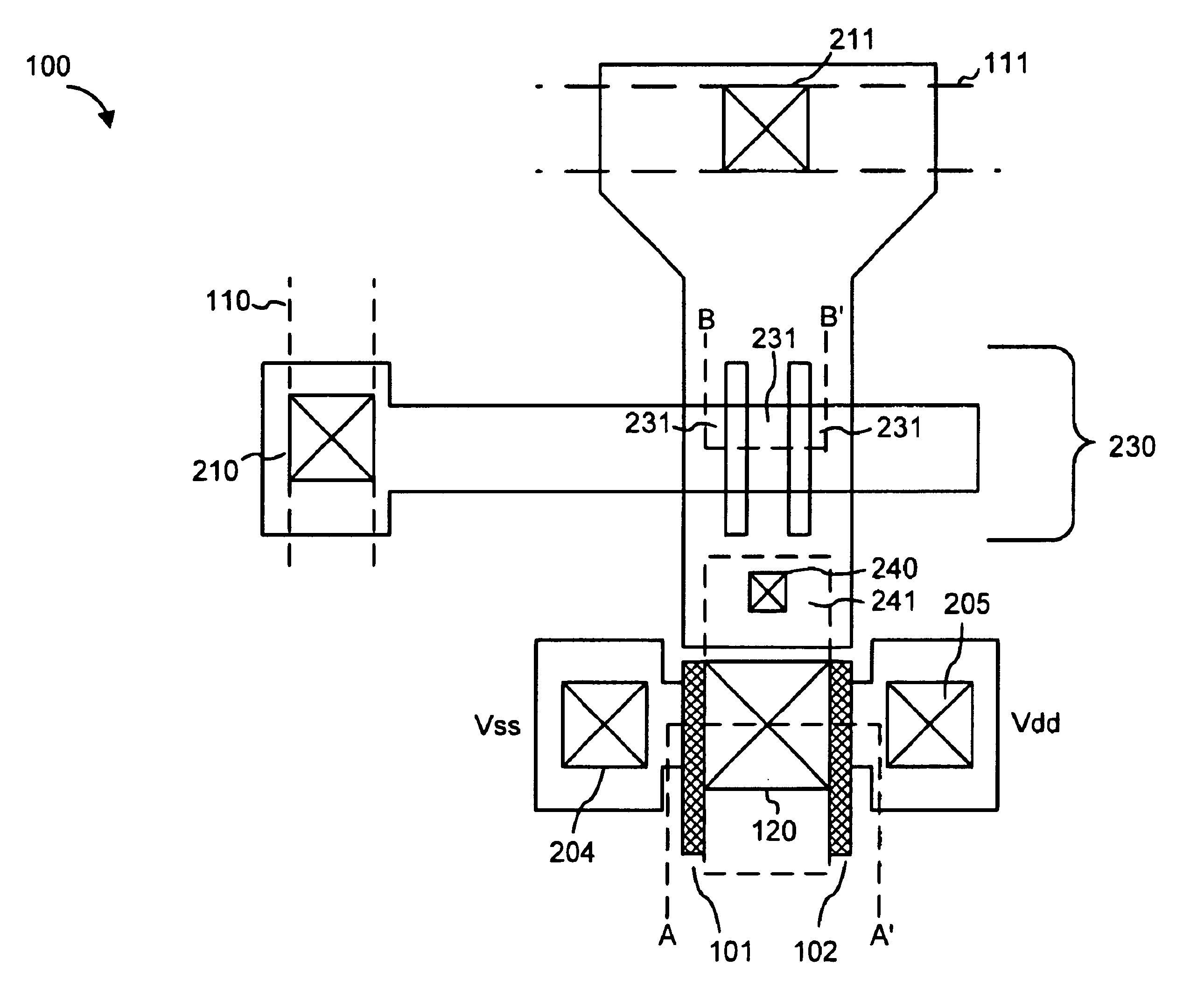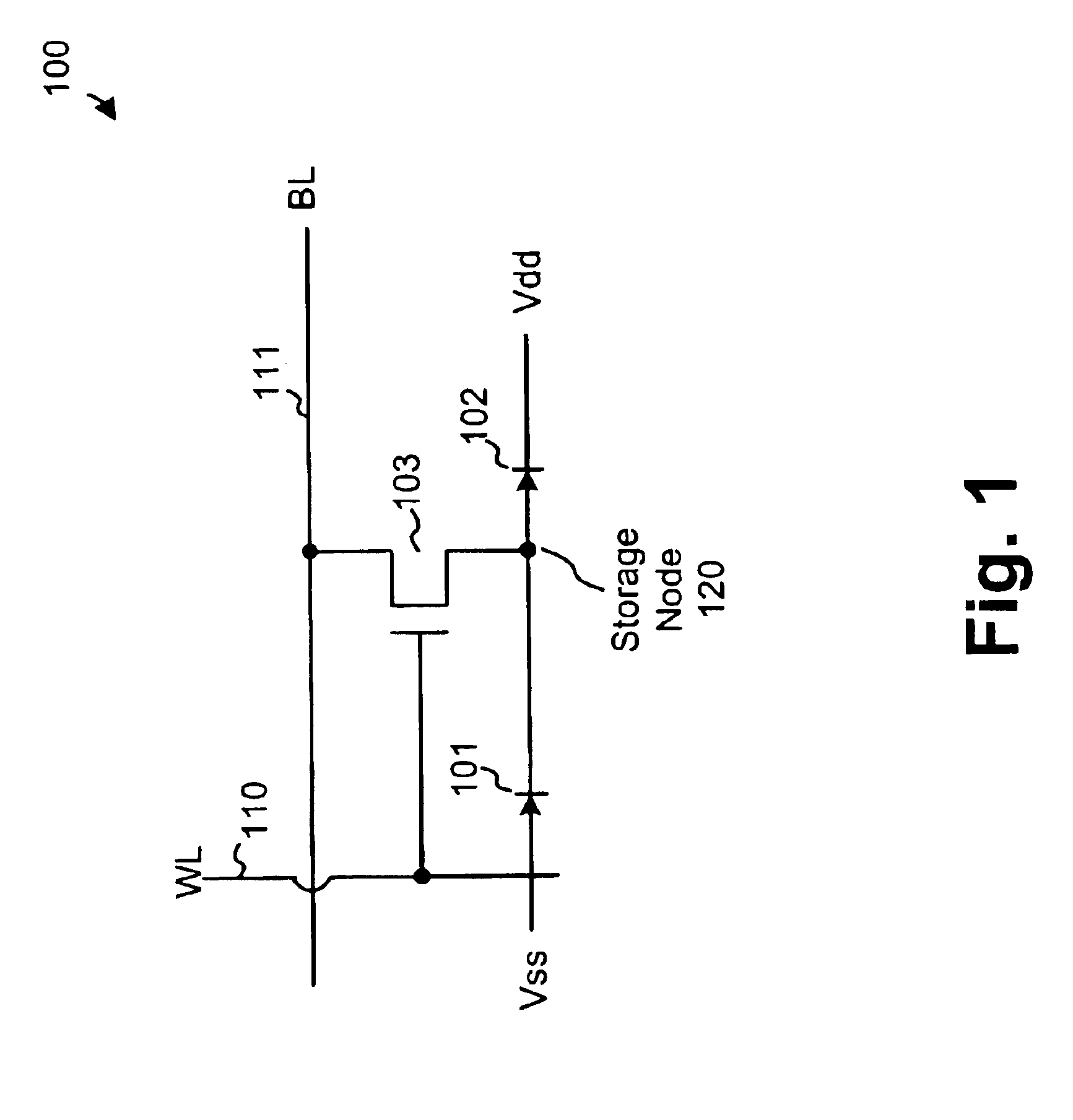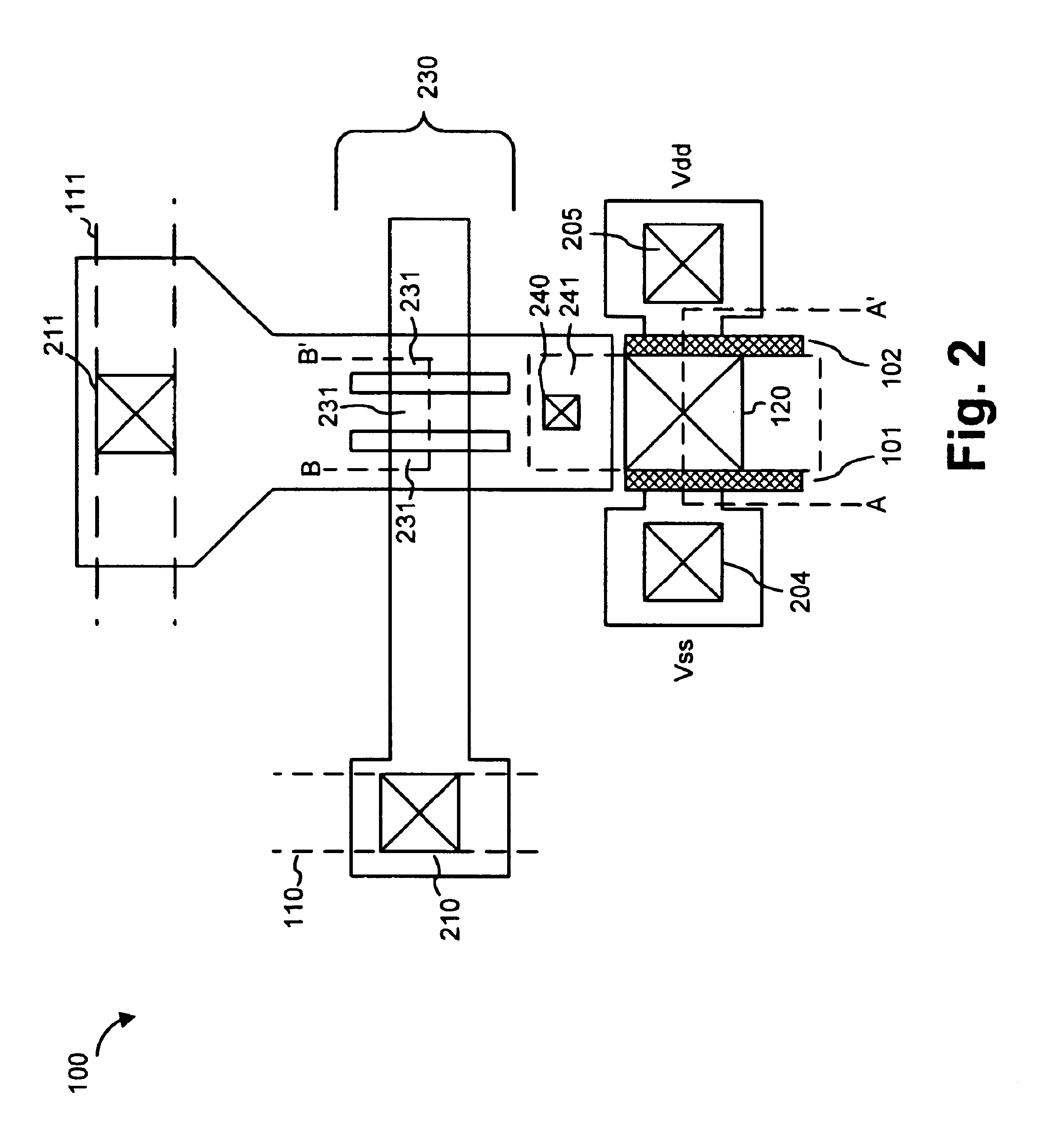FinFET-based SRAM cell
a sram cell and finfet technology, applied in the field of semiconductor devices and semiconductor manufacturing, can solve the problems of conventional mosfets that have difficulty scaling below 50 nm fabrication processing
- Summary
- Abstract
- Description
- Claims
- Application Information
AI Technical Summary
Problems solved by technology
Method used
Image
Examples
Embodiment Construction
refers to the accompanying drawings. The same reference numbers may be used in different drawings to identify the same or similar elements. Also, the following detailed description does not limit the invention. Instead, the scope of the invention is defined by the appended claims and equivalents.
An SRAM cell includes a single FinFET and two tunnel diodes. The diodes may be formed using a FinFET-type fin structure. The FinFET may include multiple fins, which help to increase current through the pass gate and improve read time.
FIG. 1 is a schematic circuit diagram of an SRAM cell 100. Two tunnel diodes 101 and 102 are connected in series between a voltage source (Vss) and a voltage ground (Vdd). Word line (110) and bit line (111) control reading / writing to the SRAM cell 100. A switch 103, such as a MOSFET, is connected at its source to BL 111, at its gate to WL 110, and at its drain to node 120. Node 120 acts as the data storage node for the SRAM cell 100.
Tunnel diodes 101 an...
PUM
 Login to View More
Login to View More Abstract
Description
Claims
Application Information
 Login to View More
Login to View More - R&D
- Intellectual Property
- Life Sciences
- Materials
- Tech Scout
- Unparalleled Data Quality
- Higher Quality Content
- 60% Fewer Hallucinations
Browse by: Latest US Patents, China's latest patents, Technical Efficacy Thesaurus, Application Domain, Technology Topic, Popular Technical Reports.
© 2025 PatSnap. All rights reserved.Legal|Privacy policy|Modern Slavery Act Transparency Statement|Sitemap|About US| Contact US: help@patsnap.com



